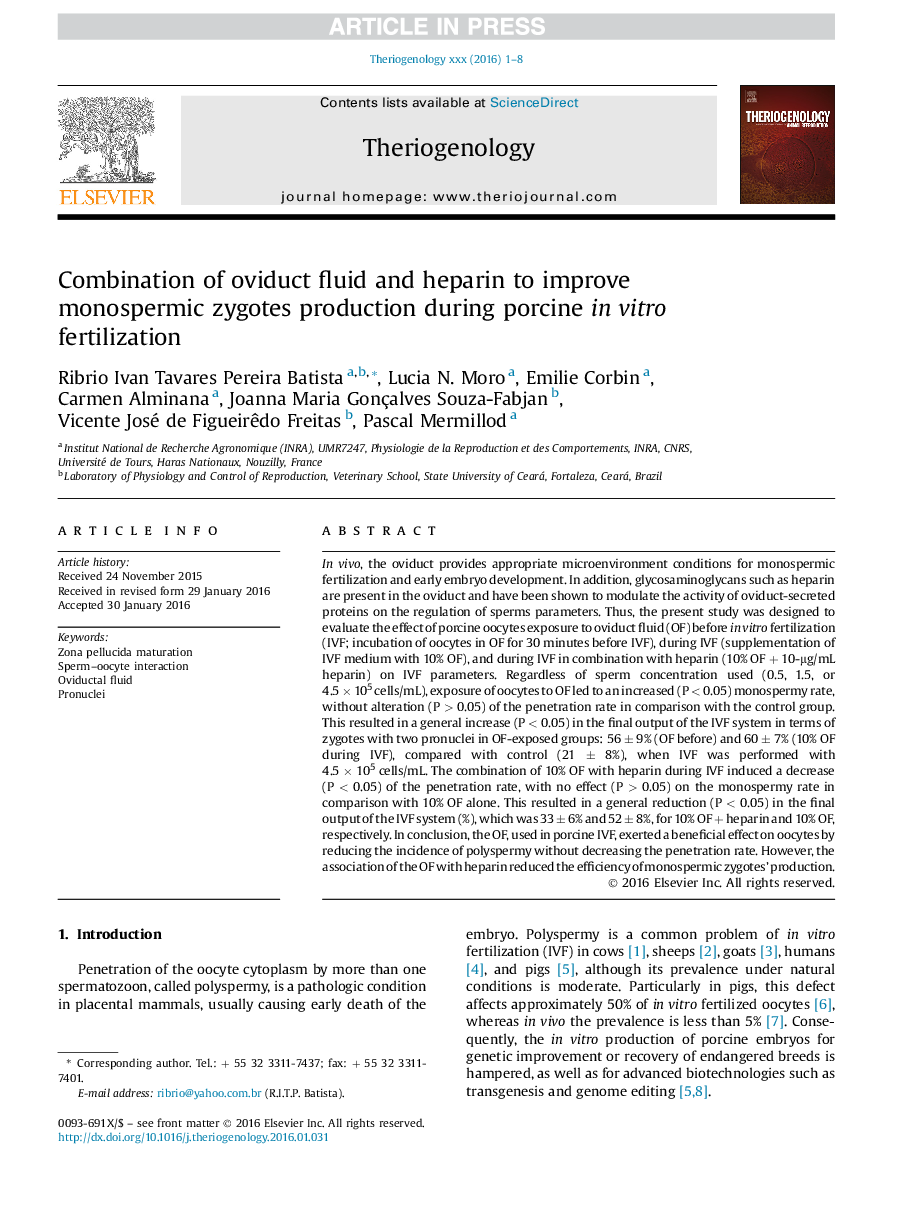| Article ID | Journal | Published Year | Pages | File Type |
|---|---|---|---|---|
| 10891567 | Theriogenology | 2016 | 8 Pages |
Abstract
In vivo, the oviduct provides appropriate microenvironment conditions for monospermic fertilization and early embryo development. In addition, glycosaminoglycans such as heparin are present in the oviduct and have been shown to modulate the activity of oviduct-secreted proteins on the regulation of sperms parameters. Thus, the present study was designed to evaluate the effect of porcine oocytes exposure to oviduct fluid (OF) before in vitro fertilization (IVF; incubation of oocytes in OF for 30 minutes before IVF), during IVF (supplementation of IVF medium with 10% OF), and during IVF in combination with heparin (10% OF + 10-μg/mL heparin) on IVF parameters. Regardless of sperm concentration used (0.5, 1.5, or 4.5 Ã 105 cells/mL), exposure of oocytes to OF led to an increased (P < 0.05) monospermy rate, without alteration (P > 0.05) of the penetration rate in comparison with the control group. This resulted in a general increase (P < 0.05) in the final output of the IVF system in terms of zygotes with two pronuclei in OF-exposed groups: 56 ± 9% (OF before) and 60 ± 7% (10% OF during IVF), compared with control (21 ± 8%), when IVF was performed with 4.5 Ã 105 cells/mL. The combination of 10% OF with heparin during IVF induced a decrease (P < 0.05) of the penetration rate, with no effect (P > 0.05) on the monospermy rate in comparison with 10% OF alone. This resulted in a general reduction (P < 0.05) in the final output of the IVF system (%), which was 33 ± 6% and 52 ± 8%, for 10% OF + heparin and 10% OF, respectively. In conclusion, the OF, used in porcine IVF, exerted a beneficial effect on oocytes by reducing the incidence of polyspermy without decreasing the penetration rate. However, the association of the OF with heparin reduced the efficiency of monospermic zygotes' production.
Keywords
Related Topics
Life Sciences
Agricultural and Biological Sciences
Animal Science and Zoology
Authors
Ribrio Ivan Tavares Pereira Batista, Lucia N. Moro, Emilie Corbin, Carmen Alminana, Joanna Maria Gonçalves Souza-Fabjan, Vicente José de Figueirêdo Freitas, Pascal Mermillod,
